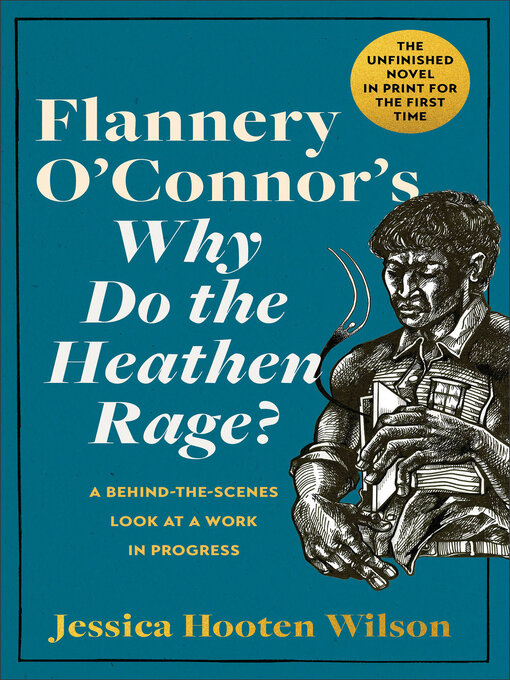Flannery O'Connor's Why Do the Heathen Rage?
A Behind-the-Scenes Look at a Work in Progress
"Wilson does a great service in resurrecting one of O'Connor's lesser-known works."—Publishers Weekly
When celebrated American novelist and short story writer Flannery O'Connor died at the age of thirty-nine in 1964, she left behind an unfinished third novel titled Why Do the Heathen Rage? Scholarly experts uncovered and studied the material, deeming it unpublishable. It stayed that way for more than fifty years.
Until now.
For the past ten-plus years, award-winning author Jessica Hooten Wilson has explored the 378 pages of typed and handwritten material of the novel—transcribing pages, organizing them into scenes, and compiling everything to provide a glimpse into what O'Connor might have planned to publish.
This book is the result of Hooten Wilson's work. In it, she introduces O'Connor's novel to the public for the first time and imagines themes and directions O'Connor's work might have taken. Including illustrations and an afterword from noted artist Steve Prince (One Fish Studio), the book unveils scenes that are both funny and thought-provoking, ultimately revealing that we have much to learn from what O'Connor left behind.
-
Creators
-
Publisher
-
Release date
January 23, 2024 -
Formats
-
Kindle Book
-
OverDrive Read
- ISBN: 9781493445028
-
EPUB ebook
- ISBN: 9781493445028
- File size: 17303 KB
-
-
Accessibility
No publisher statement provided -
Languages
- English
-
Reviews
-
Publisher's Weekly
November 6, 2023
In this worthwhile if flawed study, Wilson (Reading for the Love of God), Fletcher Jones Chair of Great Books at Pepperdine University, contextualizes Flannery O’Connor’s little-known third novel, which was left unfinished at the time of her 1964 death. Captured in only a “handful of odd scenes” and scattered notes, the work’s themes will nonetheless ring familiar to anyone who’s read O’Connor’s stories or novels: as the patriarch of a failing white Southern family slowly dies, cared for by the family’s Black employee, his disillusioned son takes up writing letters to Oona Gibbs, a civil rights activist “driven by her spiritual inclinations”; the plot crests when Oona shows up unexpectedly on the farm. In dissecting each fragment, Wilson draws revealing links to O’Connor’s life, speculating, for instance, about whether Gibbs was inspired by the author’s friend, playwright Maryat Lee. The focus is on O’Connor’s complicated relationship with Catholicism and race. According to Wilson, O’Connor grappled with “issues of social justice and fairness” as she wrote the novel, yet still saw the civil rights movement as “an earthly and political issue” that “invited little investigation into its heavenly importance,” a tension that may have informed her inability to complete the work. Odd diversions sometimes distract, as when Wilson invokes New York Times columnist Ross Douthat to suggest that contemporary readers don’t understand divine grace as O’Connor did, because “many assume they are divine, gods unto themselves,” taking a slap at Eat, Pray, Love author Elizabeth Gilbert along the way. Still, Wilson does a great service in resurrecting one of O’Connor’s lesser-known works. Religious fans of the Southern literary giant will be especially fascinated.
-
Loading
Why is availability limited?
×Availability can change throughout the month based on the library's budget. You can still place a hold on the title, and your hold will be automatically filled as soon as the title is available again.
The Kindle Book format for this title is not supported on:
×Read-along ebook
×The OverDrive Read format of this ebook has professional narration that plays while you read in your browser. Learn more here.

